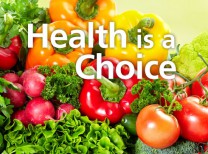A couple of years ago 28 students and staff at Coachella Valley High School were evaluated by emergency crews after reporting symptoms ranging from stomach aches and nausea to headaches and sore throats. The culprit was an organic herbicide used on nearby agricultural fields. We have been told over and over that organic is better – healthier, safer, fresher, and better for the environment, but what does it really mean for food to be “organic”? What about “natural” foods? Are we blindly following a label that may also be harming us?
“100% organic” food is made with 100% organic ingredients; “organic” foods must be comprised of at least 95% organically produced ingredients. The other 5% may come from a national ingredient list provided by the USDA and easily found on the USDA website. “Natural” and “all natural” foods do not contain preservatives or artificial ingredients, but they may contain antibiotics, growth hormones, and other chemicals. As such, they essentially represent the middle ground between organic and conventional foods.
Many think that organic food equates to pesticide-free or chemical-free, but that is not the case. It does mean that the pesticides used on organic foods are naturally derived rather than synthetic, but it appears that about half of both natural and synthetic pesticides are carcinogenic. It shouldn’t be too shocking that organic growers depend on pesticides as well – they face the same risks of crop damage as other farmers. However, because organic growers do not use GMO seeds, they potentially face greater risk by foregoing bio-engineered resistance.
Organic farming practices do tend to reduce erosion and pollution, use less energy, increase soil fertility, and conserve water, but conventional farmers would argue that they too follow similar conservation practices.
Organically raised animals are not given genetically modified organisms (GMOs) or genetically engineered (GE) foods, antibiotics, or growth hormone, nor are they fed animal byproducts.
Published literature doesn’t offer strong evidence of a nutritional benefit of organic food, but not much has been explored in this realm either. Further, choosing organic foods does reduce exposure to pesticide residues and antibiotics given to animals raised for consumption.
As we do our best in eating as healthily as possible, we need to research further to broaden our viewpoint beyond the debate over “conventional” and “organic.” One major point to consider is factoring in distance from farm to plate. Go and meet your growers at local farmer’s markets or through community supported agriculture (CSA). Ask how they care for their land and the produce and animals they raise. Then decide for yourself what is healthiest for you.
Dr. Brian Myers is a naturopathic primary care doctor with a focus on pediatric and family medicine at Live Well Clinic in La Quinta. For more information, go to www.livewellclinic.org or call (760) 771.5970.
Sources: 1) http://www.kesq.com/news/herbicide-to-blame-for-causing-illness-at-coachella-valley-high-school/62962825; 2) https://www.helpguide.org/articles/healthy-eating/organic-foods.htm; 3) https://www.ocf.berkeley.edu/~lhom/organictext.html; 4) http://www.foodnutritionscience.com/articles/why-do-farmers-spray-chemicals-on-crops/; 5) https://thefisheriesblog.com/2012/10/29/rotenone-the-fish-killer/amp/; 6) https://ehp.niehs.nih.gov/1002839/; 7) http://journals.plos.org/plosone/article?id=10.1371/journal.pone.0008762; 8)http://www.nsf.org/consumer-resources/green-living/organic-certification/organic-labeling-requirements; 9) http://www.gcbl.org/live/food/healthy-diet/what-do-food-labels-really-mean
















































Comments (0)